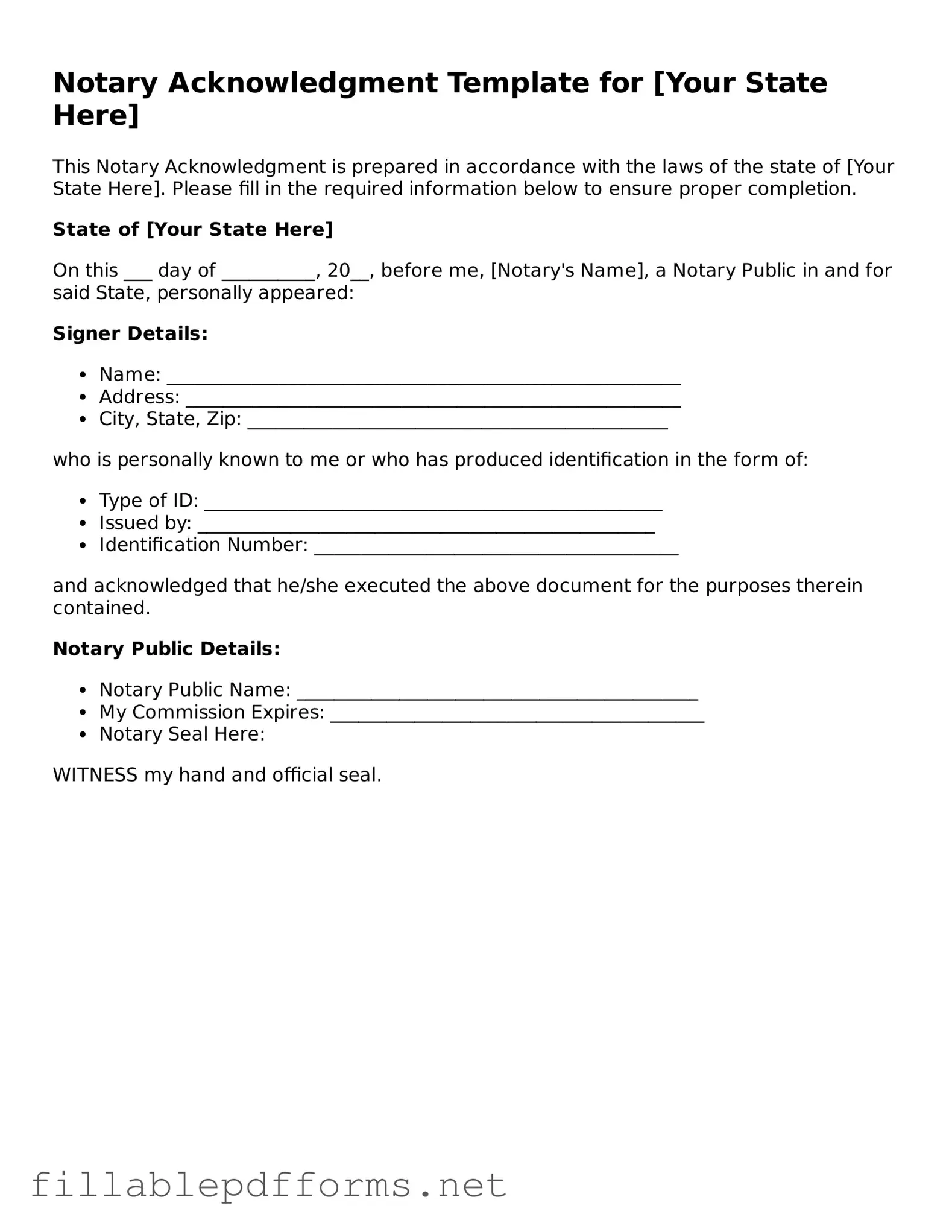Blank Notary Acknowledgement Template
A Notary Acknowledgement form is a legal document that verifies the identity of a signer and confirms that they willingly signed a particular document. This form is crucial in ensuring the authenticity of signatures, thereby enhancing the integrity of various legal transactions. Understanding its purpose and requirements is essential for individuals and businesses alike.
Launch Editor Here
